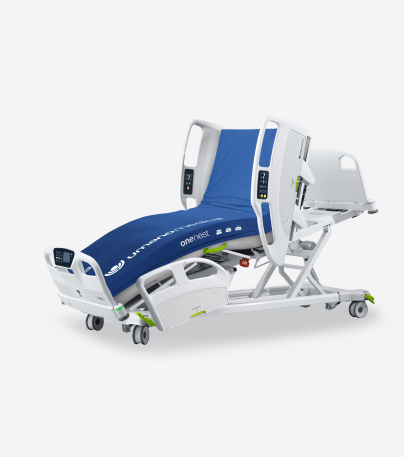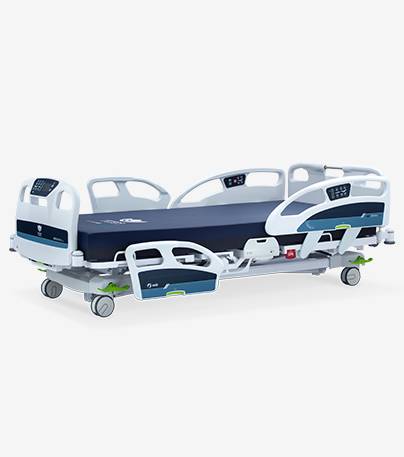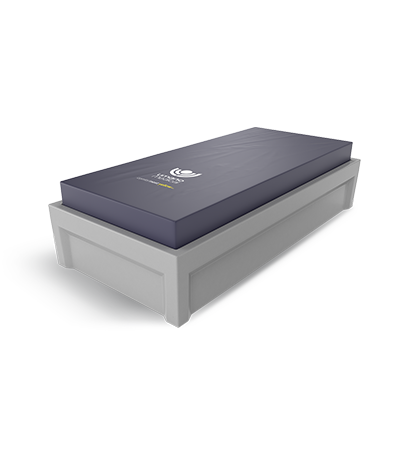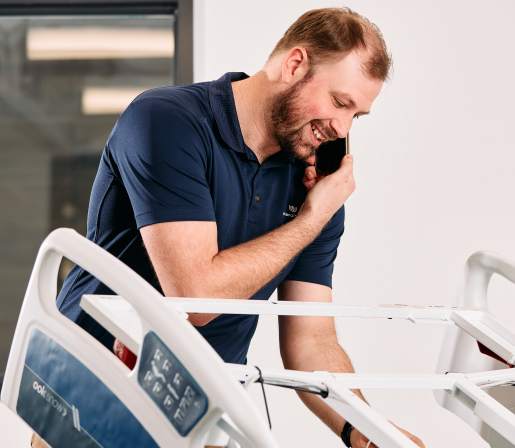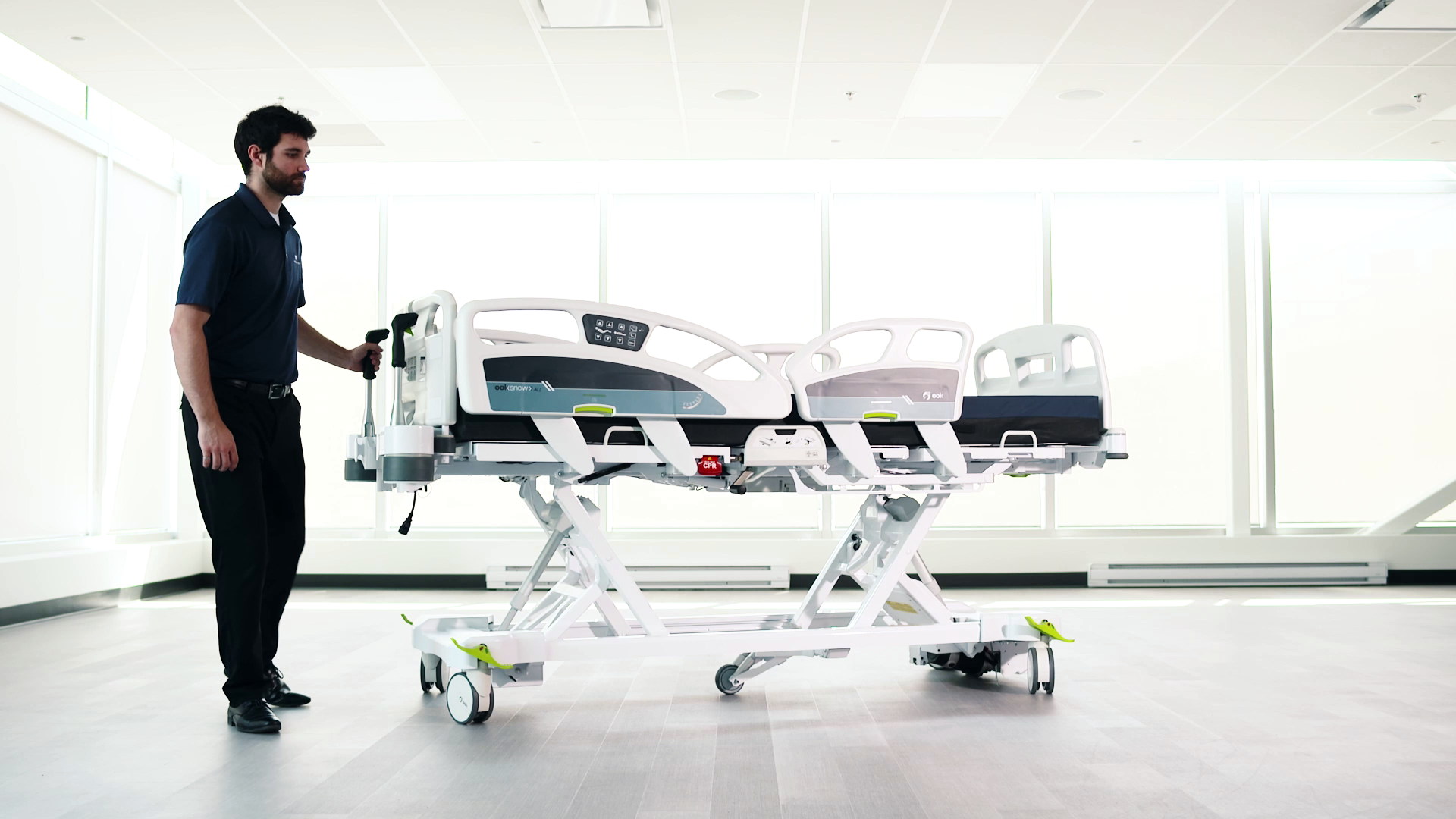
Which features to consider when purchasing a bariatric bed for your hospital?

By Steve Bolduc
Senior Product Manager
Published on January 3, 2022
A bariatric bed is a specialized bed made specifically to accommodate larger and heavier patients. It is wider than regular medical beds and allows for more comfort and dignity for those patients.
Before addressing the most important features for bariatric beds, it is important to remember why every institution should always have bariatric beds readily available. “The hospital bed is an important medical device upon which patients may remain for days or weeks. Even during peak waking hours, patients spend 83% of their time in bed’’.¹
The availability of appropriately sized beds can help reduce rental costs, and “enable greater throughput and turnover from the emergency department, intensive care unit, and operating room.”² It also provides a better and safer experience for the patient.
There are several important features to keep in mind when deciding which bariatric bed would be best suited for your care centre in order to meet your care teams’ needs and ensure patient dignity and safety:
- Weight capacity
- Adjustability (width and length) and height of the bed
- Manoeuvrability
- Accessory compatibility

“Some of this equipment is generally available in a single size (e.g., one-size-fits-all or one-size-fits-most), patients who are obese may require larger equipment to ensure both safe care for them and a safe working environment for any providers responsible for caring for them. In Patient Safety’s analysis, they identified issues with these other types of equipment, and these could generally be categorized into one of two groups: events in which the patient was too big for the equipment and events in which equipment was too large to be moved around a facility or into a transport vehicle. Both event types have the potential to cause humiliation or distress for patients, injuries, and delays in care.”
Weight Capacity
To ensure that it can support any patient coming into the facility, a bariatric bed should be able to accommodate a safe working load up to 1000 lb. The weight capacity of the bed needs to be high to ensure that the patient and all the required bed accessories needed to care for the patient, like IV poles, support surface and patient helper, can be supported by the bed. Great bariatric beds should also be able to function properly when being used by a lighter patient. Some bariatric beds require a minimum weight for the patient to use certain functions, such as the scale.
Adjustability and height
Low height bariatric bed
Having a low height bariatric bed is beneficial for both your healthcare personnel and your patients. A medical bed should go low enough for patients to safely ingress and egress the bed, thus minimizing the risk of falls. In contrast, the bed should also rise high enough so caregivers can work with little to no bending to help minimize stress and strain.
Furthermore, height adjustments make it easier for staff to position patients properly. Easy bed height adjustments also offer bariatric patients a dignified experience by allowing them to avoid getting up and down from the bariatric beds too frequently.
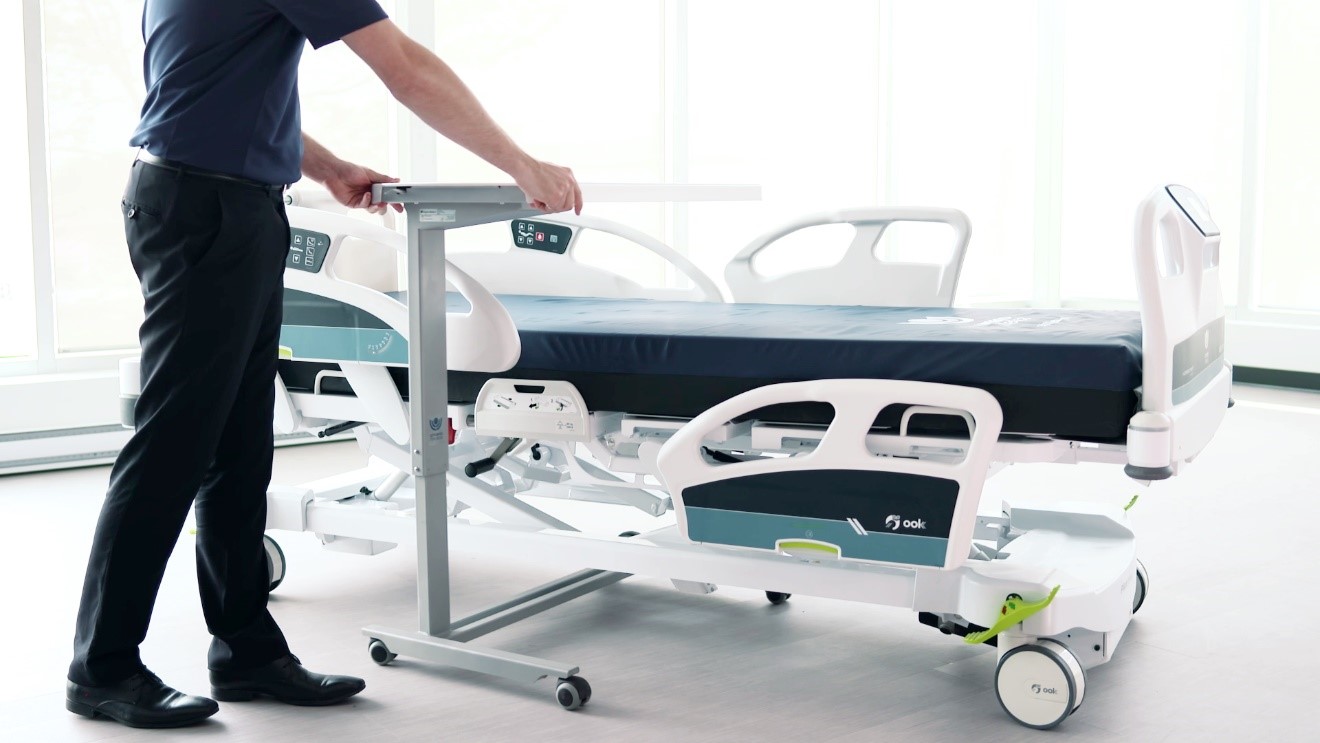
Bariatric bed with adjustable width
“A patient of size placed on a bed of insufficient size or weight capacity may experience negative outcomes including increased risk of pressure injury, decline in functional independence due to difficulty repositioning, or sleep deprivation due to discomfort.’’⁴
Having an adjustable bariatric bed allows patients of almost any size, within the weight capacity of the bed, to be comfortable and have space to move around. Weight distribution can look different from one patient to another. It is important to have beds that can easily adapt to anyone.

Manoeuvrability
Bariatric beds, because of their high weight capacity, are heavier and usually harder to move around. It is important for the staff to be able to move the bed easily, with or without a patient in it. Most bariatric beds require multiple people to move them when a patient is in them as most medical facilities are understaffed, the care teams’ efforts and time should not be put towards struggling to move the bed around, it should be put towards caring for the patient.
To solve this problem, a lot of bariatric hospital beds, such as the ook snow ALL, now offer a powered drive system to allow one person to move the bed easily around a facility, even when a patient is in bed.
Accessory compatibility bariatric beds
Having a bariatric bed that works with the accessories of your other beds makes life a lot easier for the hospital staff. IV poles, urinal holders, oxygen holders, removable pump holders, and side rail pads should not differ from one bed to another. Having the same bed platform on all your medical beds, including bariatric, makes it a lot easier for your team when setting up a room for a patient. It ensures that the needed accessories can be found quickly without having to rent them or having maintenance staff go look through specialty accessories. Additionally, using beds that are all built on the same platform makes learning how to use the products much easier for your staff, as all the beds function the same.
Other elements to consider when purchasing a bariatric bed
Design of the bed
When a bariatric bed is designed with bariatric patients in mind, the staff members can handle their patients more safely and provide them with comfort and dignity. Med-Surg beds and bariatric beds should not look any different. Having a beautifully designed bed can seem vain, but it provides dignity to the patient. It ensures that every bariatric patient going through the hospital doors feels the same as any other patient.
Ease of use
Bariatric beds should be easy to use for hospital staff. Having a short learning curve will make staff confident and increase efficiency when using the bed, even if they do not use it every day. Beds built on the same platform make it easy for healthcare personnel to know exactly how to operate the beds, as they all work on the same system and software.
Furthermore, having a versatile bariatric bed will also help staff be more familiar with the bed, as it can be used more often and in more contexts.
Easy to clean
Every bed coming into a hospital or care centre should be easy to clean to support infection prevention programs and protocols. When choosing a bariatric bed, here are some elements that should be considered to ensure easy cleaning:
- Seamless smooth surfaces that are resistant to most cleaning products used in medical care settings
- Flat mattress decks and an open bed architecture for easy maintenance and cleaning
- Side rails that never touch the floor
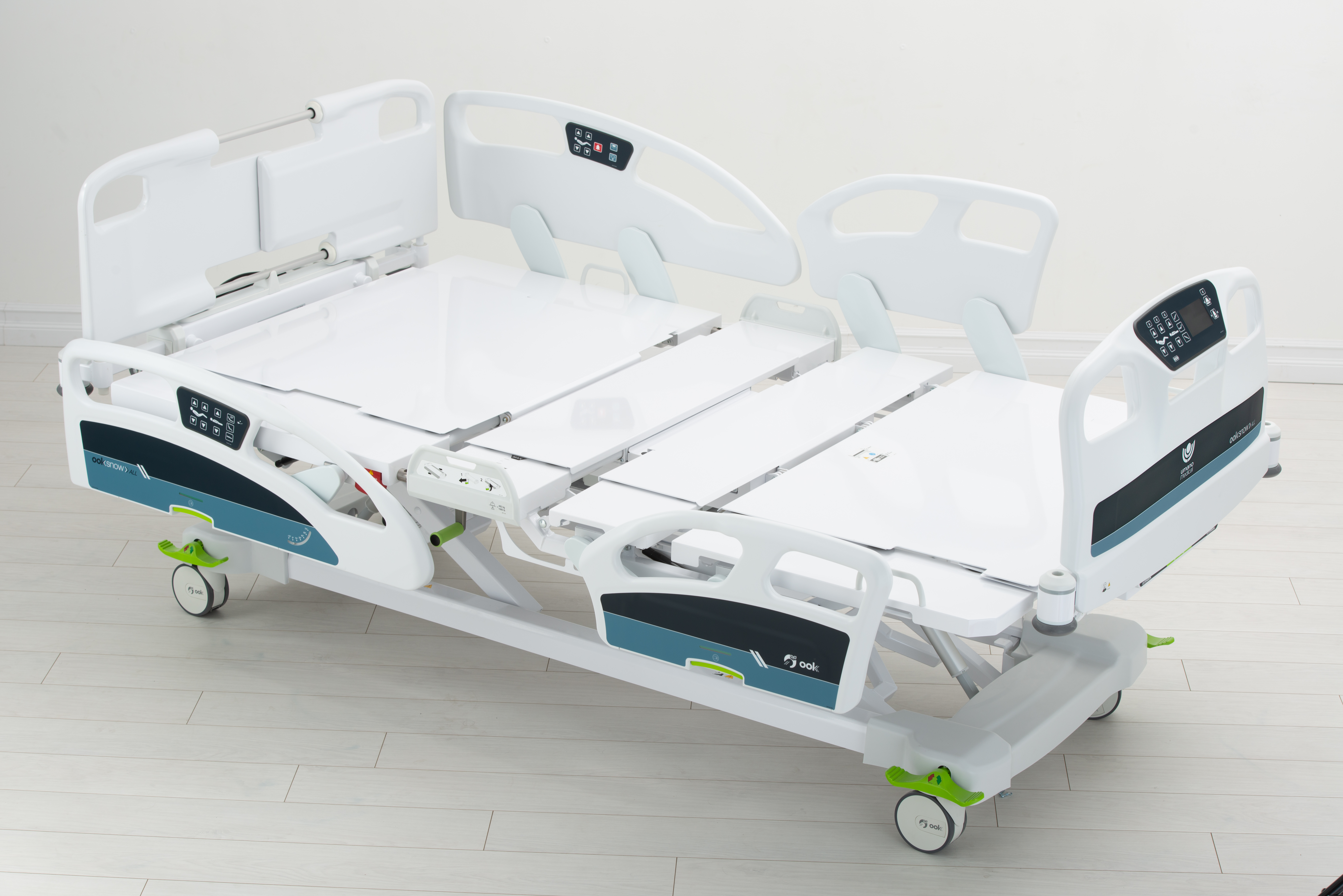
How does Umano Medical’s ook snow ALL bariatric bed meet your staff and patients’ needs?
- The ook snow ALL bed medical bed can accommodate all patients throughout multiple care environments with its one-step width expansion system, its 1060 lb increased weight capacity, and low height.
- Our ook snow ALL bed can go low without compromising overall functionality and compatibility with other equipment like tables and bed lifts. This also applies to ook snow ALL beds equipped with our Pilot Drive system.
- Our hospital beds are all based on the same bed platform, making it easy for staff to learn how to operate our bariatric bed.
Discover the ook snow ALL , the most versatile bariatric bed on the market.
About the author

Steve Bolduc
Steve is a Senior Product Manager at Umano Medical, whose work is focused on new product development, and customer & end-users-focused marketing strategy. He started his career in the medical equipment field over 3 decades ago. Always involved in different aspects of medical bed development, Steve has also been responsible for product design, R&D project management, advanced quality, and regulatory affairs management. In his current role, he is also a mentor for the product managers and design teams.
Related articles

Headquarters
230 Nilus-Leclerc Blvd.
L'Islet, QC G0R 2C0
CANADA
1 844 409-4030
Lévis Office
470 3e Avenue
Lévis, QC G6W 5M6
CANADA
US Location
11845 Adie Rd.
Maryland Heights, MO 63043
UNITED STATES
Sherbrooke Office
670, Joseph-Louis-Mathieu Rd.
Sherbrooke, J1R 0X3
CANADA
Careers
Our talented and passionate team is determined to revolutionize the medical industry. Be part of the journey: join the Umano Experience.
See available jobsConnect with us
Copyright © 2025 Umano Medical inc

